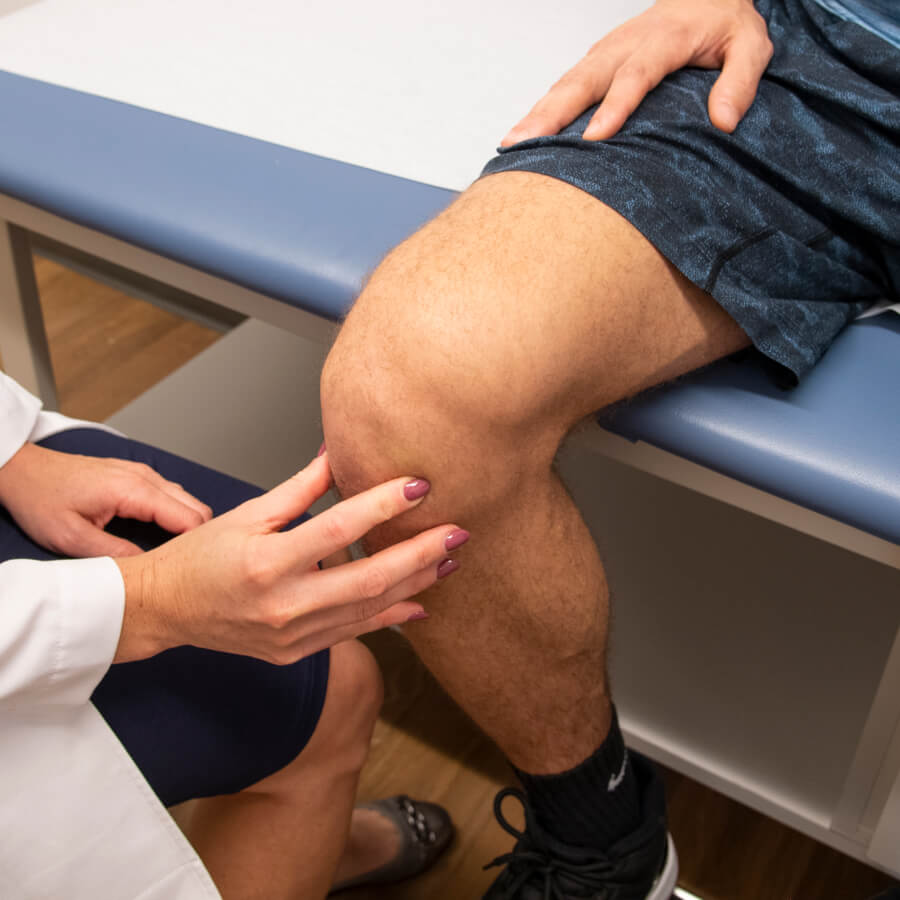Overview
You may have heard runner’s knee referred to by several names including chondromalacia patella and patellofemoral pain syndrome. All of these terms refer to the sensation of pain that occurs around your kneecap/at the front of your knee. If you spend time playing sports that require an extensive amount of jumping and running, you may be more likely to suffer from this condition. Typically, pain from runner’s knee will increase when you sit for extended periods, walk up and down stairs, run, or perform squats.
Get Advanced Knee Care
Right In Your Neighborhood
Finding the treatment that’s right for your knee problem is our focus at The Orthopedic Health Center. We use non-surgical treatments whenever possible. When you do need surgery, our expert surgeons help you heal faster and with less pain. All right in your neighborhood: Hoboken and Jersey City.
Symptoms

Runner’s knee can cause aches and dull pain centered on the front of your knee, and you may find that it hurts more if you bend your knee for long periods, use the stairs frequently, or if you squat or kneel often.
The knee is one of the most maneuverable parts of the body. It is frequently under a consistent amount of extreme stress since the knee carries all the body weight. If you’re suffering from any of the aforementioned symptoms, it’s a great idea to consult with your physician to see if you have runner’s knee.
Causes and Risk Factors
Factors that increase your risk for developing runner’s knee include:
- Weaknesses or instability in the knee joints. If your knee and hip don’t work correctly to keep your kneecap in place, that part of the leg may come under stress and result in runner’s knee.
- Injury. A fracture, dislocation, or severe injury to the kneecap can cause runner’s knee.
- Overuse. Sports that involve jumping or running can put continuous stress on your knee, and the extensive stress can irritate the area beneath the kneecap.
- Surgery. If you have knee surgery for any of the joints, tendons, or nerves in the kneecap area, it can increase your chance of contracting runner’s knee.
Additionally, young females who participate in running and jumping sports are more likely to develop runner’s knee.
A Minimally-Invasive Approach to Knee Repair
A common misconception is that you need a big, open surgery to fix your knee. We use modern, minimally-invasive procedures to avoid this path whenever possible – and many of our patients are up and walking by the next day.
Treatment and Prevention
The best ways to lower your chance of developing runner’s knee are losing weight (if doctor-recommended), doing strength exercises, performing exercises properly to optimize how you jump, pivot, and run, warming up and stretching before doing extensive exercise, and wearing good and supportive shoes.
If you do develop runner’s knee, potential treatment plans will depend on the severity of the injury. For mild injuries, resting the knee and ice are great ways to lower the level of pain. In more severe cases, medication, physical therapy, pain management procedures and injections, and even surgery may be recommended.
Takeaway
If you have pain in your knees, runner’s knee, chondromalacia patella, patellofemoral pain syndrome, or any other type of knee pain, our orthopedic doctors are available for consultation. We have decades of experience treating knee conditions and want to help you get back to the life you deserve. Don’t wait; contact us today.!
